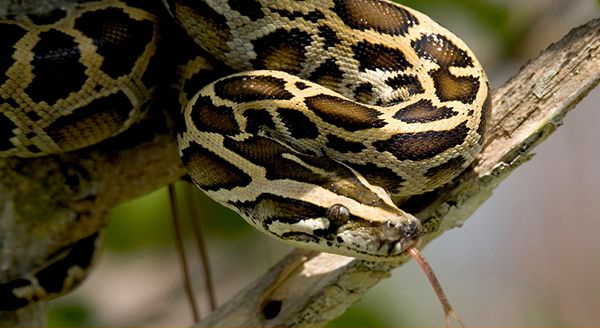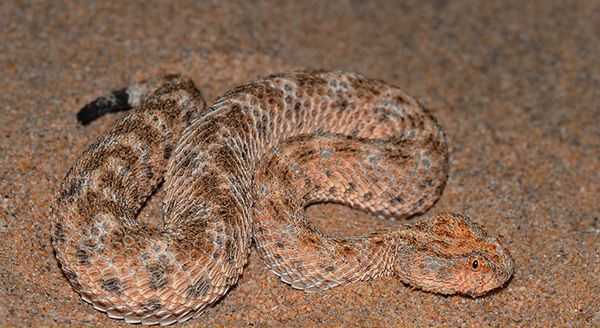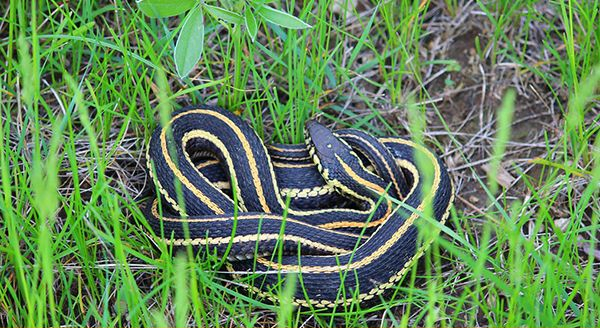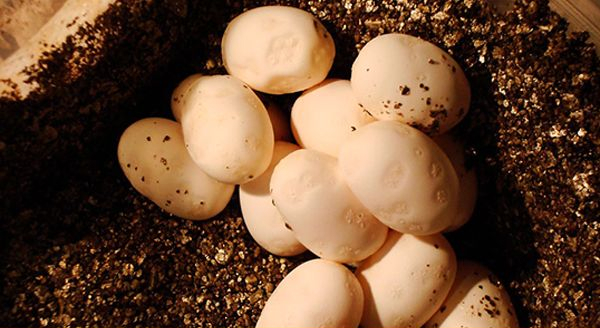With the exception of Antarctica, every continent is home to almost 3,000 venomous snakes or nonvenomous snake species. Snakes cause excessive fear in many people due to their silent, slithering mobility and quick defensive reactions. On the other hand, most snakes prefer to stay away from people and concentrate on living their own lives, including lazing in the sun, eating delicious meals, and producing more snakes.

When Is Mating Season For Snakes?
Snake mating season gets determined by environmental factors such as temperature, sunlight, food availability, and rainfall. Only healthy, energetic females will reproduce, as laying eggs and carrying live young is physically demanding. This means snakes that live in cooler climates typically mate shortly after emerging from hibernation in early spring, so their young are born during the hot summer months. Mating can occur all year for snakes that live in tropical areas.
For most species, snakes breed in the springtime. Between March and May, temperatures rise and food becomes more plentiful. Mating season can last anywhere from a few weeks to a few months, depending on the species. Some snakes mate multiple times during this period, while others only mate once.

Sexual Maturity
Most snakes mate when they are sexually mature. Sexual maturity is at different ages depending on the species of snake. Snakes’ ability to reach sexual maturity also depends as much on their size, diet, and general health as on their age.
Most healthy, well-fed snakes mature sexually between 2 and 3. There are some differences; for instance, Burmese pythons usually attain sexual maturity between the ages of 4 and 5 years, while black rat snakes don’t mature enough to have children until they are at least seven years old, with some females delaying reproduction for as long as ten years. Once a snake is sexually mature, it will mate every year for the rest of its life.
Types of Snake Reproduction
A female snake can reproduce in several ways, depending on the species. The different types of reproduction are oviparous, viviparous, ovoviviparous, and parthenogenesis.

Oviparous
Oviparous snakes lay eggs. The female will find a safe place to deposit her eggs, such as in a hollow log or underground burrow, and then leave them to fend for themselves. The eggs are usually soft-shelled and require high humidity levels to stay moist. The snake eggs will desiccate and die if the environment is too dry.
Most snake species are oviparous, including all boas, pythons, vipers, and cobras. Some better-known oviparous snakes are the king cobra, eastern brown snake, and garter snake.
A mother snake living in hot climates typically lays fertilized eggs, as the young would not survive the high temperatures if born alive.

Viviparous
The viviparous snakes give birth to live young, fully formed and independent, meaning they don’t need egg incubation and typically have shorter gestation periods than oviparous snakes. This is because the eggs would hatch inside the mother and use up resources for their survival.
Only a tiny minority of snake species are viviparous, including the anaconda, boa constrictor, and garter snake. Some vipers, such as the Asiatic sand viper, can also give birth to live young.
Viviparity is more common in snakes that live in cooler climates, as the young are born in a more advanced state and have a better chance of surviving the cold temperatures.
Viviparous snakes typically have longer lifespans than oviparous snakes, as they can reproduce more frequently.

Ovoviviparous
The ovoviviparous reproductive strategy combines oviparity (egg-laying) and viviparity (giving birth to live young). This method is less common than either of its parts, but it can be found in some snake species, such as the green tree python and king cobra.
Ovoviviparous snakes have several advantages over other types of reproducing snakes. The eggs get protected inside the mother’s body, making them less likely to be damaged or eaten by predators. The young are also born in a more advanced state and can fend for themselves immediately, which increases their chances of survival.
Ovoviviparous snakes typically have shorter lifespans than oviparous or viviparous snakes, as they expend much energy producing eggs and caring for their young.

Asexual reproduction or parthenogenesis
Asexual reproduction, or parthenogenesis, is a type of reproduction that does not involve fertilization by a male. In snakes, this type of reproduction can occur when a female is storing sperm from a previous mating but does not encounter a male for an extended time. After the stored sperm gets used up, the female will lay eggs that will hatch without being fertilized.
Asexual reproduction is relatively rare in snakes and is only known to occur in a few species, such as the Brahminy blind snake and the garter snake. It is more common in lizards and other reptiles than in snakes.
Parthenogenesis can be advantageous for snakes as it allows them to reproduce without needing a mate. However, it can also lead to inbreeding and genetic defects.
Mating Habits
During mating season, male snakes often travel long distances to find a mate. They will compete with other males for the attention of the females and will sometimes engage in physical fights. The female snakes usually remain in their home ranges during this time. Once a male snake has found a suitable mate, he will court her by entwining his body around hers and rubbing his chin on her head. If she is receptive, they will then mate.

Snake Eggs
The identification process of snake eggs is relatively simple compared to bird eggs. Snake eggs are usually white or off-white, whereas bird eggs are brightly colored and decorated. However, other reptile eggs, such as those of alligators and turtles, can be challenging to differentiate from snake eggs.
What Do Snake Eggs Look Like?
Snake eggs come in many different shapes and sizes depending on the species of snake. They can be smooth or have a rough, scaly surface. Most snake eggs are oval and have a leathery shell that helps to protect them from predators and the environment. The shell is also semi-permeable to enable gas exchange and for the young to breathe.
The color of snake eggs also varies, but they are typically white or pale yellow. Some snakes will lay their eggs in a nest, while others, like garter snakes, will drop their eggs in a secluded place.
How Many Eggs Does a Snake Lay?
Snakes can lay anywhere from one to forty eggs at a time, depending on the species. Some snakes, such as king cobras, will lay more eggs than others, like garter snakes, who typically only lay a few eggs at a time.

Where Do Snakes Lay Their Eggs?
Snakes generally don’t build nests to lay their eggs in – they will instead search for a sheltered spot on the ground. Some snakes will lay their eggs amongst leaf litter or under rocks, while others may bury them in abandoned animal burrows. King cobras are an exception, as they will create nests out of leaves and other debris by moving them around with their bodies. Both wild and captive king cobras have been seen to engage in this behavior.
Snake Eggs Incubation
The average time for snake eggs to hatch is 57 days, but the time can vary depending on the kind of snake. Some eggs hatch in just 40 days, while others take up to 70 days.
What To Do If You Find a Clutch of Snake Eggs?
The best thing to do if you find a clutch of snake eggs is to leave them alone. The mother snake knows what she’s doing and how to take care of her eggs. If you move or disturb the eggs, you could damage the snake inside and prevent it from hatching. If you find the eggs while rearranging sticks, leaf litter, or mulch, put the materials back on top of the eggs without disturbing them.
Need Help With Snake Infestation?
If you need help with snakes on your property, AAAC Wildlife Removal is the best company to call. We’ll take care of the problem quickly and efficiently so you can feel safe in your home.
We’ll also ensure that no other snakes can get into your home, so you won’t have to worry about these slithery creatures again. Contact us today to schedule a consultation!
Conclusion
Now that you understand how snakes reproduce, you can appreciate the incredible diversity of these creatures. If you see plenty of snakes in your area, try to identify them and think about the fascinating process that led to their existence. You never know when you might come across one of their eggs! If you want to learn more, feel free to do so.
To delve deeper into the topic of snake breeding seasons and the potential dangers associated with snakes, click here: snake breeding season.














